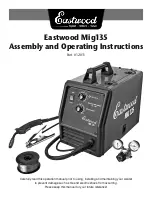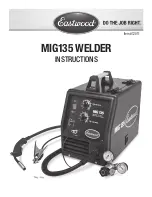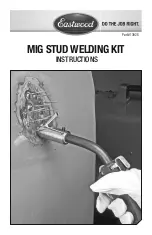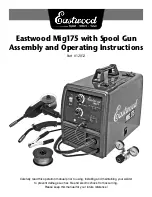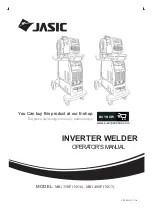
10
Flammable vapours (e.g. solvent fumes) should be kept away from the arc's radiation area.
Close the shielding gas cylinder valve or main gas supply if no welding is taking place.
Danger from fly
-
ing sparks
Flying sparks may cause fires or explosions.
Never weld close to flammable materials.
Flammable materials must be at least 11 metres (36 ft. 1.07 in.) away from the arc, or al
-
ternatively covered with an approved cover.
A suitable, tested fire extinguisher must be available and ready for use.
Sparks and pieces of hot metal may also get into adjacent areas through small gaps or
openings. Take appropriate precautions to prevent any danger of injury or fire.
Welding must not be performed in areas that are subject to fire or explosion or near sealed
tanks, vessels or pipes unless these have been prepared in accordance with the relevant
national and international standards.
Do not carry out welding on containers that are being or have been used to store gases,
propellants, mineral oils or similar products. Residues pose an explosive hazard.
Risks from mains
current and weld
-
ing current
An electric shock is potentially life threatening and can be fatal.
Do not touch live parts either inside or outside the device.
During MIG/MAG welding and TIG welding, the welding wire, the wirespool, the feed rollers
and all pieces of metal that are in contact with the welding wire are live.
Always set the wirefeeder up on a sufficiently insulated surface or use a suitable, insulated
wirefeeder holder.
Make sure that you and others are protected with an adequately insulated, dry temporary
backing or cover for the earth or ground potential. This temporary backing or cover must
extend over the entire area between the body and the earth or ground potential.
All cables and leads must be secured, undamaged, insulated and adequately dimen
-
sioned. Replace loose connections and scorched, damaged or inadequately dimensioned
cables and leads immediately.
Use the handle to ensure the power connections are tight before every use.
In the case of power cables with a bayonet connector, rotate the power cable around the
longitudinal axis by at least 180° and pre-load.
Do not wrap cables or leads around the body or parts of the body.
The electrode (rod electrode, tungsten electrode, welding wire, etc.) must
-
never be immersed in liquid for cooling
-
Never touch the electrode when the power source is switched on.
Double the open circuit voltage of a power source can occur between the welding elec
-
trodes of two power sources. Touching the potentials of both electrodes at the same time
may be fatal under certain circumstances.
Arrange for the mains cable to be checked regularly by a qualified electrician to ensure the
ground conductor is functioning properly.
The device must only be operated on a mains supply with a ground conductor and a socket
with a ground conductor contact.
Summary of Contents for WF 15i n.S.
Page 2: ...2...
Page 4: ...4...
Page 17: ...General...
Page 18: ......
Page 21: ...Controls connections and mechani cal components...
Page 22: ......
Page 29: ...29 EN OPT i WF Stand ard control panel 1 9 8 5 6 10 11 12 2 3 4 7 14 13...
Page 33: ...Installation and commissioning...
Page 34: ......
Page 39: ...39 EN 1 2...
Page 45: ...45 EN 1 2 1 2...
Page 52: ...52...
Page 53: ...Troubleshooting maintenance and disposal...
Page 54: ......
Page 61: ...Technical data...
Page 62: ......
Page 66: ...66...
Page 67: ...67 EN...





























